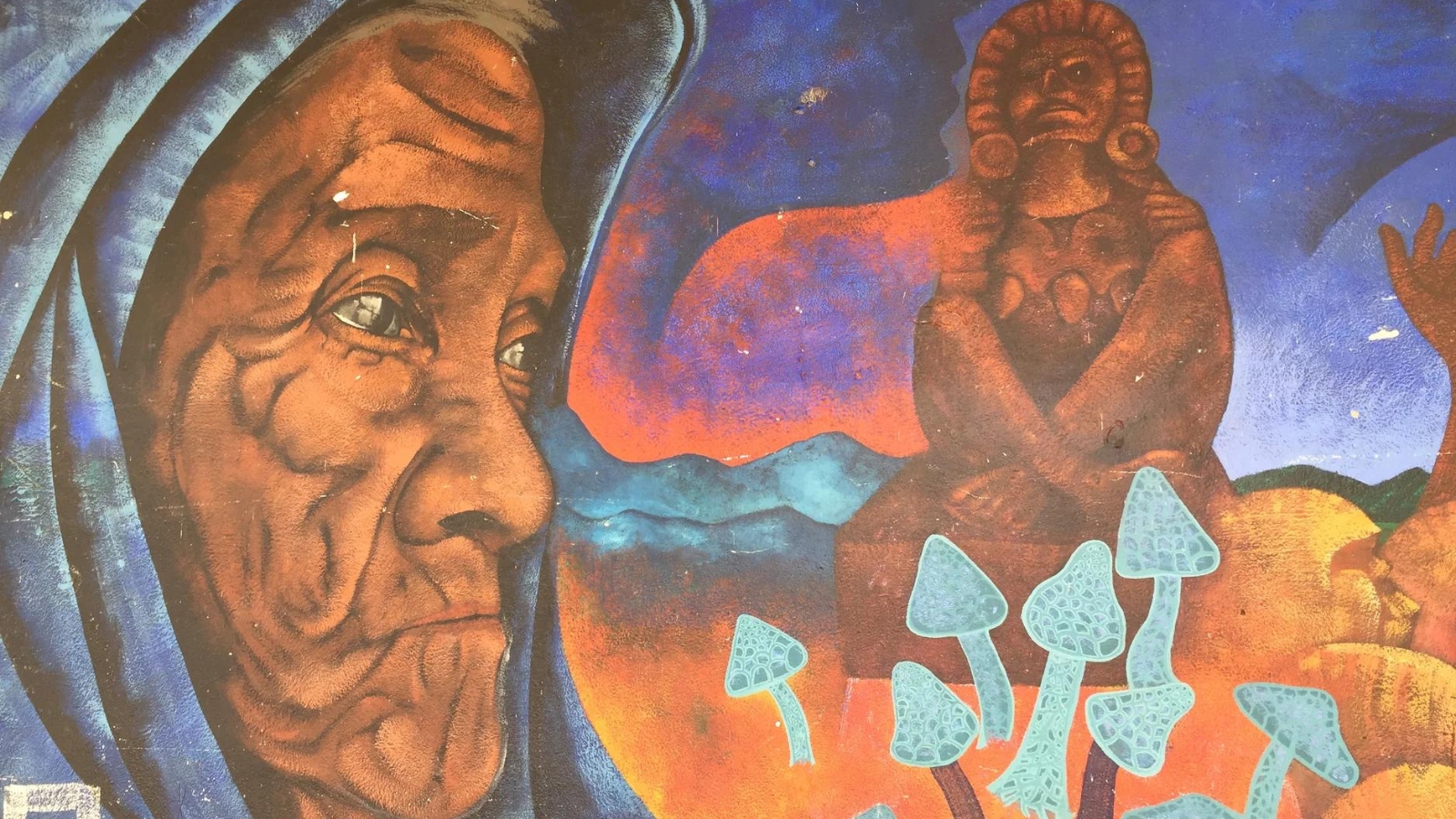The legacy of indigenous shamans and curanderos (healers) thrives to this day in the state of Oaxaca, Mexico. Located in southern Mexico, and lounging along the Pacific coast, a slew of psychedelic retreats, ceremonies, and traditions call Oaxaca home. Although some people might be familiar with the psychedelic scene in Oaxaca de Juárez (the state’s capital), fewer people know about the broader, psychedelic current throughout the state. Learn about some of the psychedelic hotspots scattered around the state, set among stunning, natural beauty.
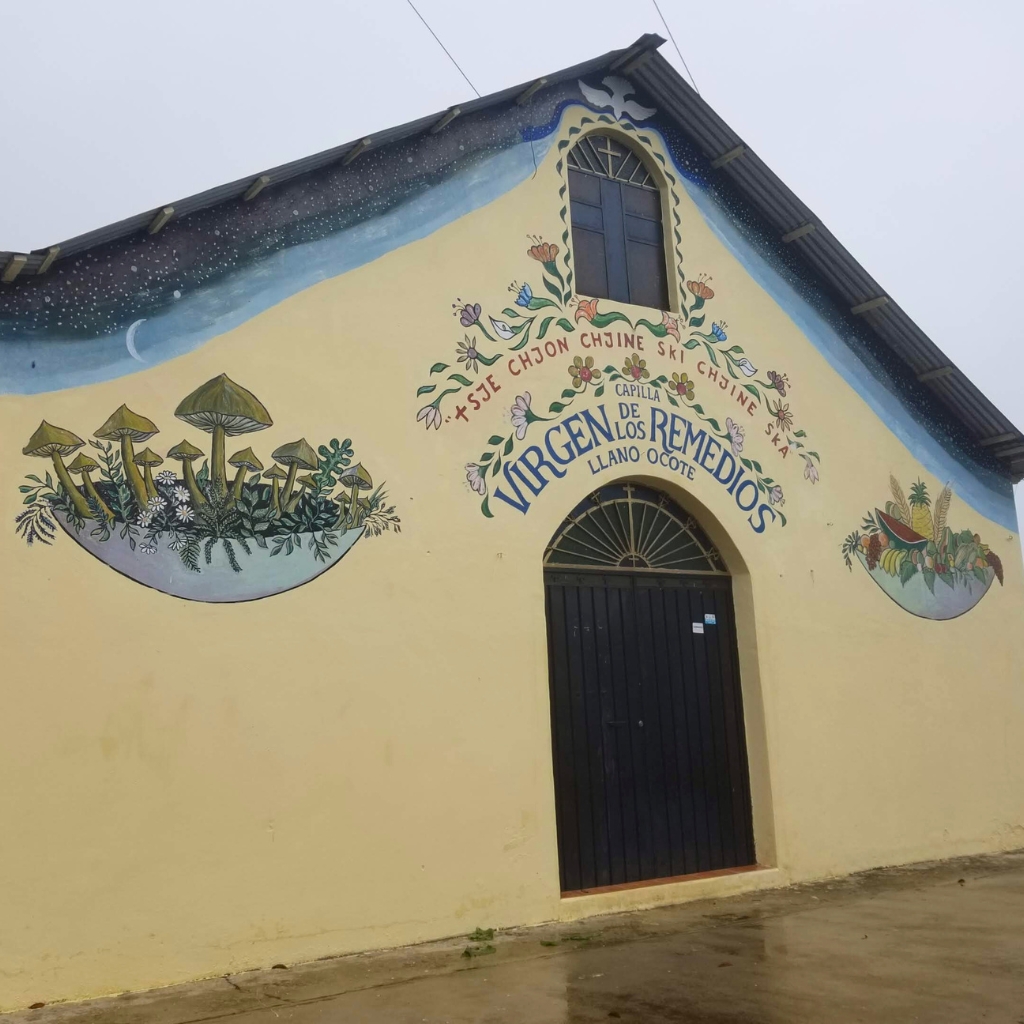
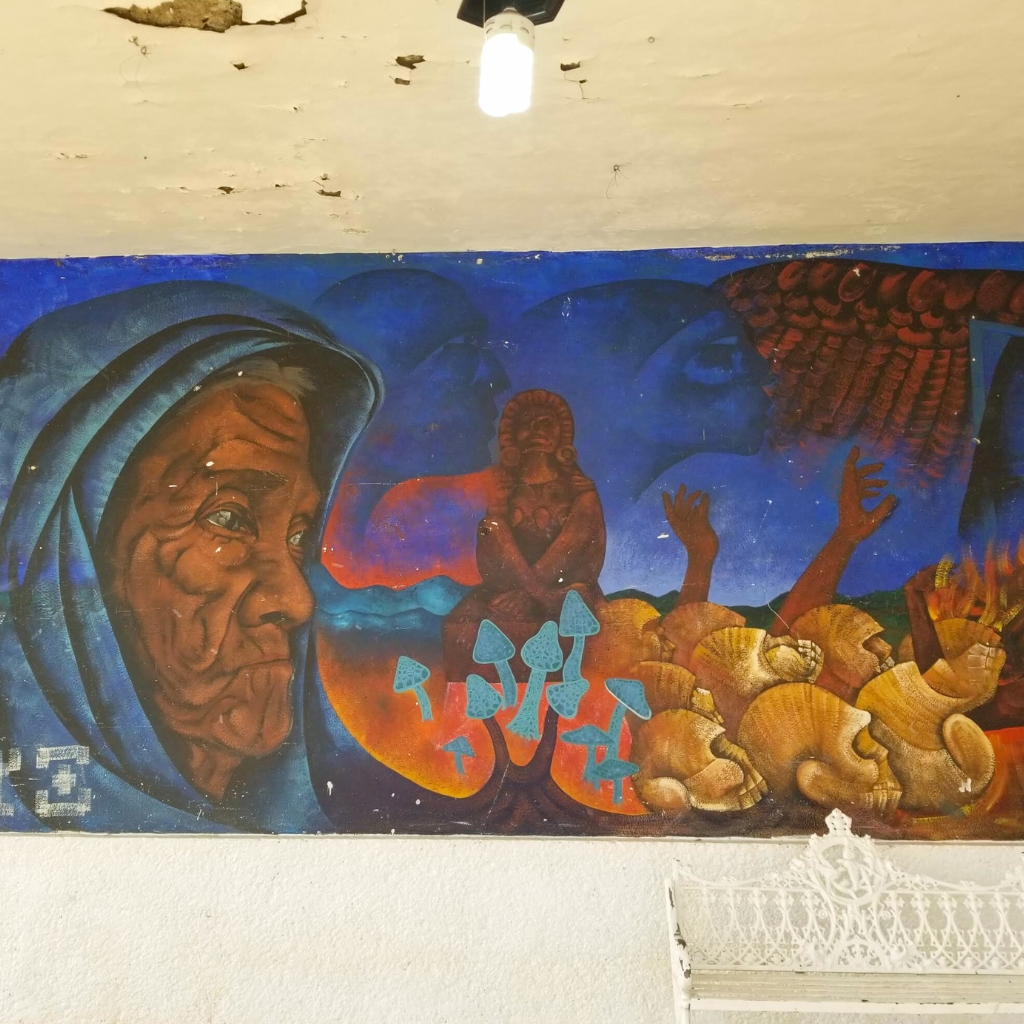

Huautla de Jiménez: Where Psilocybin Gained Worldwide Fame
Huautla de Jiménez rests over 5,000 feet high atop the Sierra Mazateca mountains in northwest Oaxaca. On a quiet day, when the clouds roll through, you can still hear the whispers of Maria Sabina’s legacy. Huautla is Maria Sabina’s hometown and the place where psychedelic pioneers like Richard Evans Schultes and R. Gordon Wasson introduced psilocybin to the West.
Although Maria Sabina’s life ended on a sad note, her legacy lives on to this day. Huautla still embraces psychedelic mushrooms with passion and zest. Mushrooms and psilocybin ceremonies maintain a rather conspicuous presence in the sleepy town. Many, if not all, of the local taxis bear mushroom artwork on their doors. I encountered a guy there in passing, who tried selling me mushrooms on the street. I wouldn’t recommend this, as you have no idea what you’re getting. There are easier ways to find them.
Ask a Local for a Hookup
Asking a cab driver is a good way, for example. Really, you don’t have to worry about it. That’s what I did. I showed him a picture of Doña Julia Julieta Casimiro, and asked him where I could find her. The cab driver replied that she had died a number of years ago, which made me feel horrible. That was until he told me he would take me to a place where I could find mushrooms. Why not?
He drove me to the door of one of Doña Julia Julieta’s daughters, who is a healer in the family tradition. After meeting another family member, I was invited inside, as if I was an old friend. I hung around for a couple of hours, enjoying a cafe de olla, and learning about the family’s history and how Doña Julia Julieta was a member of the International Council of 13 Indigenous Grandmothers. The amount of warmth, hospitality, and friendliness astounded me. In a short time, I agreed to book a traditional Mazatec psilocybin ceremony.
Traditional Mazatec Mushroom Ceremony
My ceremony left me with an unforgettable experience. My first psilocybin experience in Mexico, was also my first one-on-one ceremony that blended Mazatec mythology with Catholicism. Sitting on the floor, in front of an elaborate and well-decorated altar, I ate mushrooms so fresh I could still see tiny insects on them. Down the hatch they went. I figured that the statues of baby Jesus and the Virgin Mary staring at me would have my back.
I spent the next five or so hours lying on the floor with a blanket over me, listening to the curandera (healer) singing, chanting, and reciting prayers, both in Mazatec and Spanish. The blend of Mazatec and Catholic rites wasn’t anything I had ever experienced before. Copal incense wafted through the room, and an ancient, mystical sensation filled my body. The psilocybin weaved its way through my mind, body and spirit, as the curandera performed the psychedelic rite, leaving me in awe.
After the ceremony, I stayed for a while, to downshift and regulate a bit. I was pretty tired and wanted to go back to my hotel to sleep, even though the family encouraged me to stay longer. They noted that the mushrooms were still affecting me. I assured them I was fine and walked back.
Everything was good until I returned to my hotel and was locked out, and not given a key for the door. I had to call the family who run the hotel, and they sent their son to let me in. Calling strangers on mushrooms at night in a foreign language is an unenviable position to be in. It wasn’t a problem at all.
Maria Sabina Museum
In fact, a few days later, the matriarch of the hotel’s family asked me if I had made a viaje (trip) yet. I told her yes, with vehement enthusiasm. In fact, I told her it was the night I needed help to get into the hotel. She smiled and nodded in approval. This is how open and accepting psilocybin culture is in Huautla. Locals ask you if you’ve done a trip, and if you haven’t, they will encourage you to do so.
The rest of my week in Huautla, I spent much of my time with my curandera and her family, at her home. They invited me for lunches, had me for coffee and pastries, and were some of the most welcoming and lovely people I’ve ever met. I did have to go visit the Maria Sabina museum, whether it was touristy or not.
The museum is a humble, rustic collection of Maria Sabina’s day-to-day life, clothes, pictures, and other artifacts. It’s worth a visit, as long as you don’t expect much. I have heard that psilocybin ceremonies are also available here, with Maria Sabina’s descendants who run the museum. I spoke with one of them for about an hour, who was more than happy to tell me everything about Maria’s life and legacy. You’re also free to walk up to the Cerro de la Adoración, where Maria would hike to during psilocybin ceremonies.
On my hike back down into town, I passed a mind-blowing Catholic chapel with psilocybin mushrooms painted on the outer walls for all passers-by to see. This might be the only church of its kind in the world. I don’t know. The church does tell the story of how the Spanish were never able to bring Mazatec culture under their full control.
The Spanish gave in, and allowed the locals to preserve their shamanism while integrating it into the Catholic church. The chapel fascinates even more when pondering the possible psychedelic origins of the Catholic church outlined in Brian Muraresku’s book, The Immortality Key.
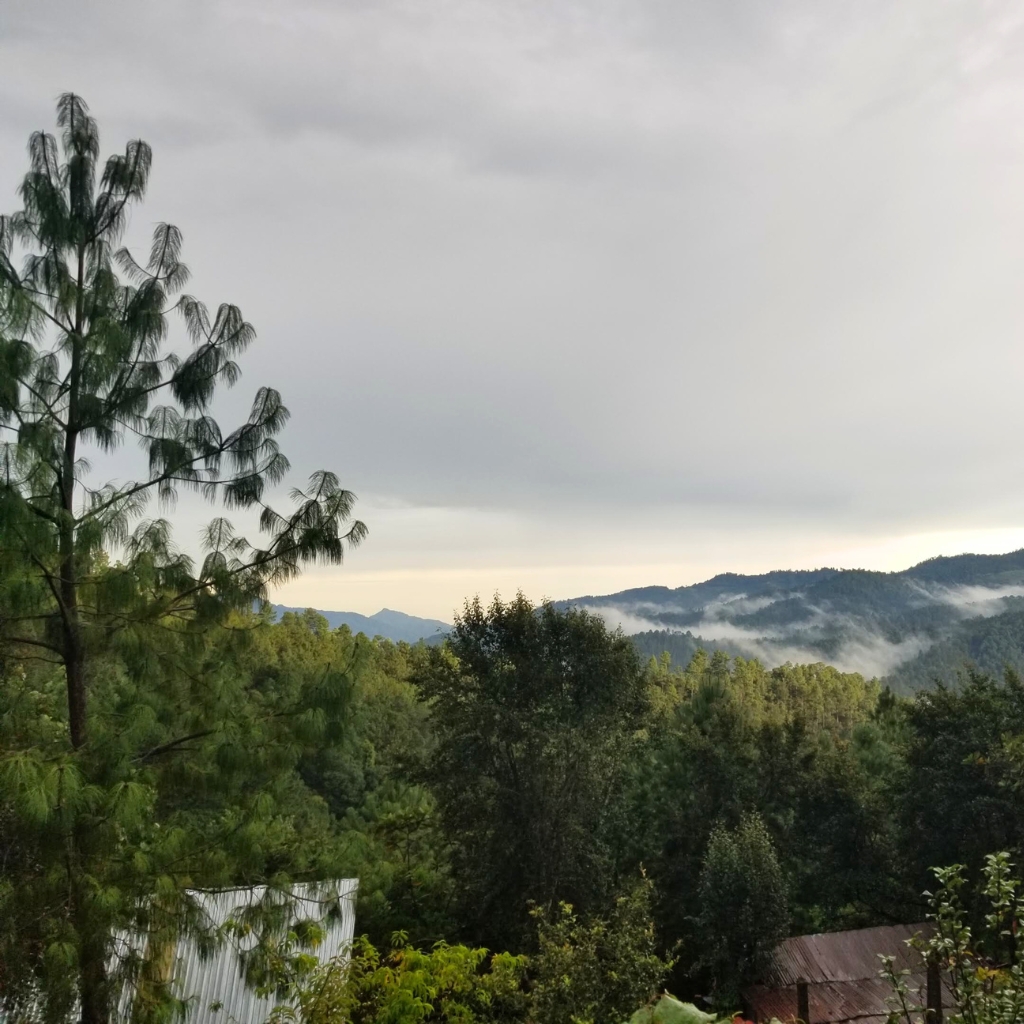
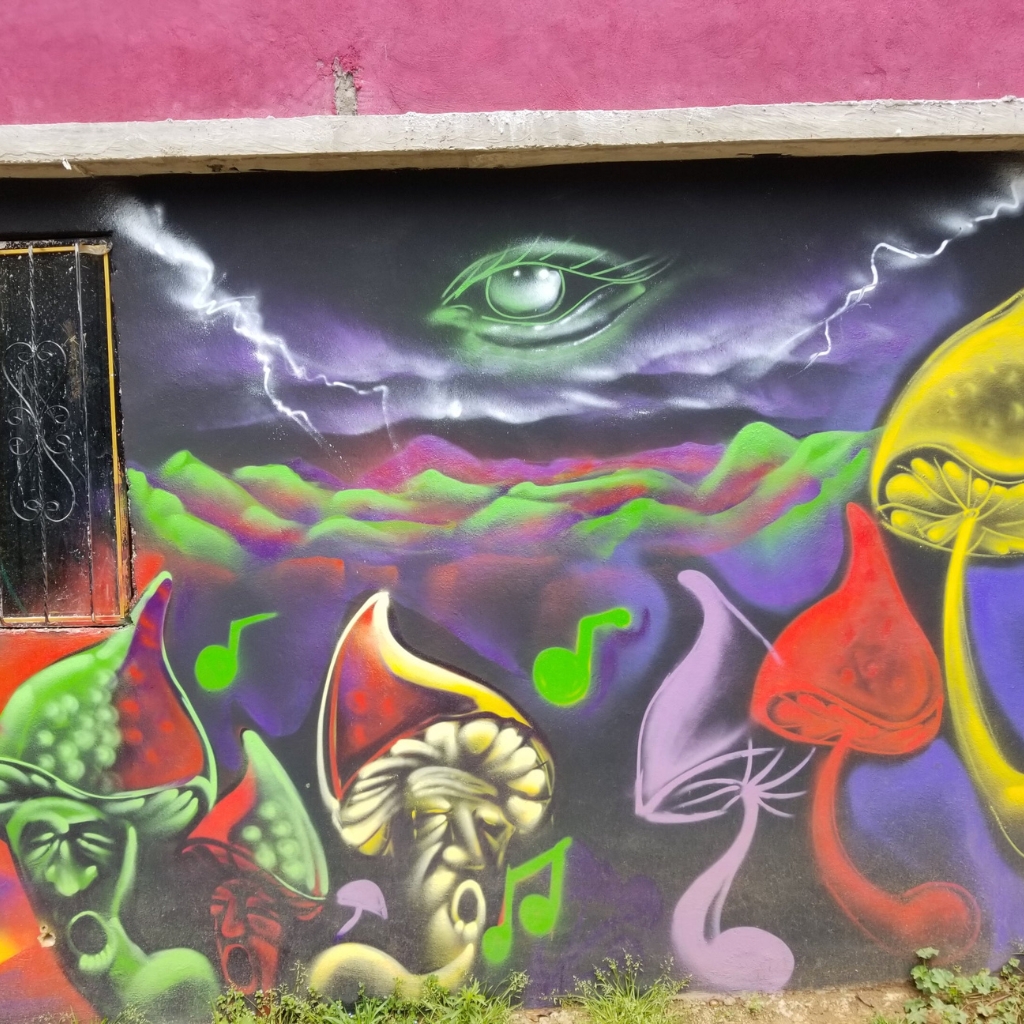

Soar Angelic with a Pinch of Psychedelic in San José del Pacifico
South of Oaxaca de Juárez, San José del Pacifico lies nestled in the magical and breathtaking cloud forest. What San José loses to Huautla in terms of history, it may make up for in popularity. The town has cultivated a reputation for being a psilocybin hotspot in Mexico. Much like Huautla, psilocybin is conspicuous and omnipresent here. However, where Huautla emanates a cozy, communal vibe, San José feels more open, playful, and self-guided.
San José doesn’t have a history of Mazatec culture, so for the most part, indigenous influence won’t be found here, aside from an awesome temazcal deep in the woods maybe. The town boasts a cloud forest, however. I’ve spent a fair amount of time in mountains around various parts of the world, and there’s something that feels a bit different about the cloud forest of San José.
Is it that you can’t tell the difference between clouds, mist, and fog there? Anytime there’s a mysterious fog drifting through a place, you either get Stephen King vibes, or you feel like you’re in Lord of the Rings. Maybe it’s the duendes?
Duendes are the red-hatted forest gnomes that the locals believe in. I didn’t spot one, but with the amount of magic in the forest there, I wouldn’t deny they exist. In fact, the local ecosystem offers such a rare and unique habitat for flora and fauna, and a lot of things thrive there that you would never have imagined.
Natural Biodiversity Makes a Swell Psychedelic Playground
San José attracts legions of hippies, backpackers, and seekers. Hostels abound, many of which you can purchase psilocybin at. If you see a yarn-haired backpacker strolling down the street, they’re likely on a head full of psilocybin. The cool thing about the town is that it’s geared towards “freelancing.” San José isn’t the place to find structure or ceremonies. You buy your mushrooms and go off somewhere into the woods and enjoy the day. Let me tell you, you need to be in the woods.
A Trip into Mother Nature
Much like my great luck and ease of finding psilocybin in Huautla, I experienced similar success in San José. I found a local man who does guided forest hikes, and wasted no time booking an excursion with him. He took me off into the cloud forest with his dogs for a few hours and showed me the wonders of Mother Nature.
He picked out a dozen or more plants, telling me that each one has a unique, holistic healing power. Everything from a rash, to high blood pressure, to diarrhea, and much more, can be remedied with a local plant in the cloud forest. And the mushrooms will impress to no end.
Mushrooms, mushrooms, and more mushrooms thrive across the cloud forest. Whether edible, inedible, or psychedelic, the damp, moist climate provides an ideal environment for the mushrooms to thrive in. My guide foraged a bunch of edible mushrooms to bring home for dinner later that day. If you’re any kind of mushroom fan or mycologist, you can get your fill and then some in San José.
While on our forest hike, my guide brought me to a friend’s cabin in the middle of nowhere. Deep and hidden in a cloud forest valley, we came upon a cabin and temazcal (sweat lodge). A couple of days later, I returned here to do a temazcal ceremony and ate psilocybin mushrooms afterwards.
Psilocybe caerulescens + Cloud Forest= A Mexican Lucky Charm
I had the wonderful opportunity to enjoy Psilocybe caerulescens, also known as “landslide mushrooms” or derrumbes in Spanish. Landslides occur often in these parts, and these gorgeous specimens sprout in the mud that’s fallen after a landslide. Let me tell you, they are a landslide indeed! They were arguably the most potent mushrooms I’ve ever eaten in my life.
I spent about 6 hours in the cloud forest outside the cabin, on a trip of magnificent, cosmic proportions. The temazcalero and some other people in the cabin, who weren’t on psilocybin, were nearby. So if I had any problems, I had an outlet. Other than that, I was left to my own devices and was able to freelance my trip sans structure, ceremony, shaman, or healer. I enjoyed an epic journey that, I have to admit, topped my experience in Huautla.
Cloud Forest, a Chicken, and a Rainbow
I don’t often experience open-eye visuals, yet these mushrooms slammed my frontal cortex. They didn’t delay either, as I could feel them coming on in a mere 15 minutes after drinking a shroom tea and eating the leftovers. I knew I was in for a full afternoon when I caught a wandering chicken staring at me, and I swear that chicken was on to what I was doing.
From there on out, I experienced a cosmic spectacle of the cloud forest coming alive in a pulsating dance of psychedelic waves, fractals, and sacred geometry. The cloud forest breathed and exhaled, ebbed and flowed, shimmied and shook. One more blessing was yet to come.
As I was fading out of my journey and returning to baseline reality, a giant, spectacular, high-fidelity rainbow broke out above the valley at sunset. Awe, pure awe. I felt humbled by the universe to receive such truth and beauty to close out my trip. I felt like everything and nothing at once. If there’s a single word to describe my day in San José, without a doubt, it’s “Yahtzee!”


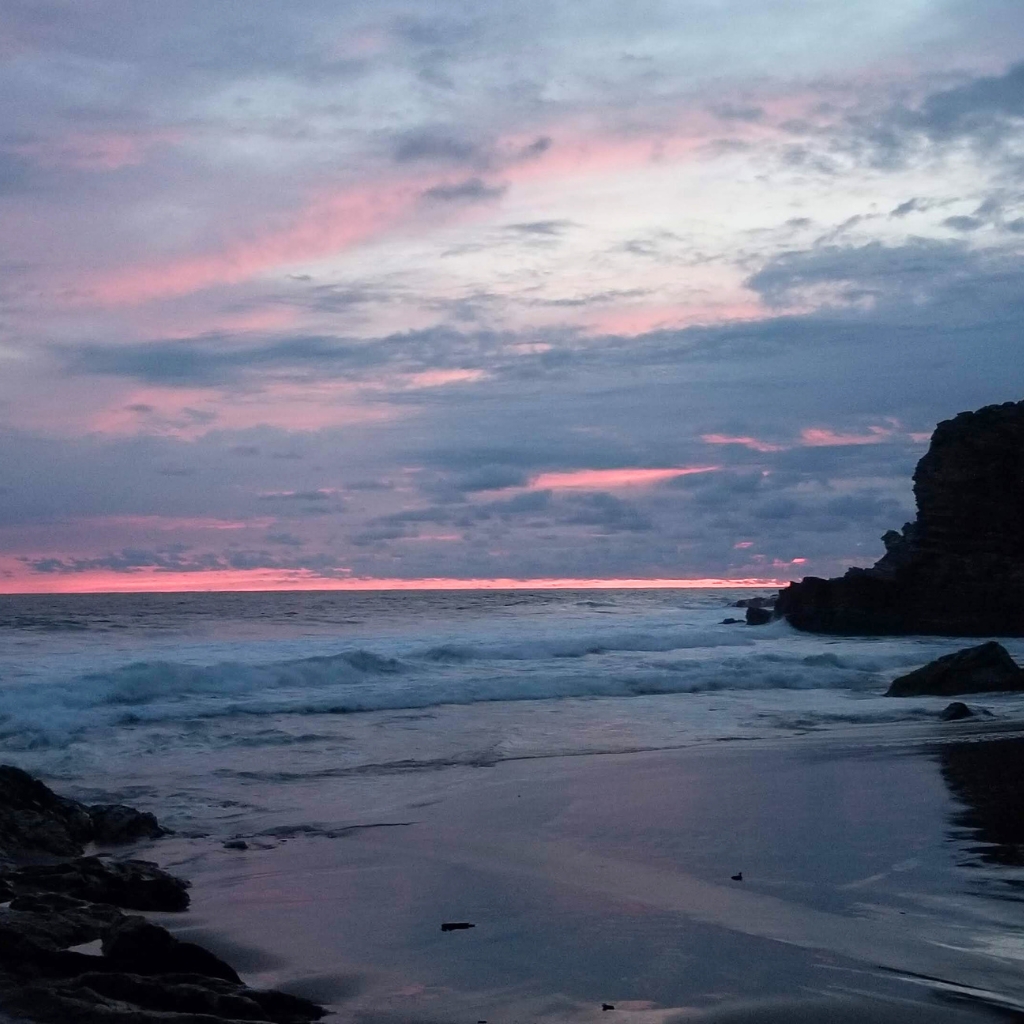
Mazunte: Mexican Psychedelic Beach Enclave
Further south a few hours, down the road from San José, you eventually arrive at the Pacific Coast and the hippie hamlet of Mazunte. Like other former, sleepy beach towns across Mexico, Mazunte now finds itself on the radar, in part thanks to the conscious community there. Over recent years, plant medicine has flowed into Mazunte, as it grows into a psychedelic beach enclave.
The Psychedelic Vibes of Mazunte
While I haven’t participated in any psychedelic endeavors in Mazunte, I did spend a week there and can see the allure. I imagine many people, including myself, make the southern circuit from Huautla and/or Oaxaca, stop in San José on the way, and end up in Mazunte for a dose of the beach.
People then can continue on to nearby Zipolite, a well-known nudist beach and party hotspot, or onwards to Puerto Escondido, which ranks as a top 10 surfing destination in the world. Mazunte acts as a crossroads for a lot of interesting people, to say the least.
I never saw police on the beaches in Mazunte, and not that often in town either, which is just a few yards away. Many people stroll the “streets” made of sand barefoot, enjoying the lackadaisical vibe that lulls you into slow living. Among the shops, bars, and restaurants, you’ll find flyers advertising every kind of conscious activity imaginable: meditation, ecstatic dance, yoga, and the requisite psychedelic offerings.
A few, small retreats call Mazunte home. Often, psychedelic practitioners make the trek down from Oaxaca de Juárez to work there for weeks or months at a time. Common medicines include psilocybin and bufo. I imagine with a bit of homework, other psychedelics can be found there as well.
If you’re a beach person, Mazunte makes an ideal place to do psychedelic freelancing on the expansive beaches. There’s plenty of room to wander and roam. Just be careful hiking around Punta Cometa, as the seaside cliffs feature steep and ominous drops. According to legend, Punta Cometa is a sacred place for indigenous people, and since it faces west, provides a grand view of the sunset over the infinity of the Pacific. As the waves lap at the rocks, you can almost hear the ocean of consciousness enticing you to dive in.
Have a Great Trip in Oaxaca
While backpacking through Mexico, I did the Oaxacan psychedelic circuit, starting north in Huautla, and making my way down to Mazunte. Doing the entire circuit makes for an amazing adventure. However, each town offers plenty of options to be a fine, single destination. Wherever you decide to go, you’ll find your journey mind manifesting no doubt. Whether it’s psychedelics, indigenous traditions, or the astounding diversity of Oaxacan landscapes, you’ll be sure to leave with a little bit of Mexico in your soul.
